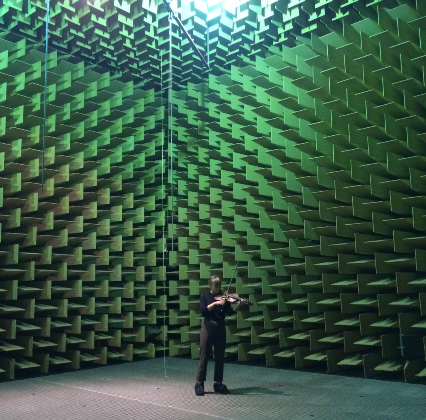
How we react to sounds, for instance in the form of music, depends on and is filtered through aspects such as the environment, our genes, and not the least, our previous experiences with music. Music that is important to us is usually, and quite naturally, music that we have heard in the past. Let´s look at music therapy as part of healthcare.

What happens when we hear (musical) sounds?
Let’s start with the basics of what happens when emotionally charged stimuli (in this case auditory sounds) enter the brain. The first stop is the thalamus in the midbrain, where stimuli are sorted out and the impulses sent to other parts of the brain in two routes; the lower (faster) and the upper (slower).
If a musical tune, for example, is associated with anxiety and thus has an emotional connotation, the impulse takes a shortcut, via the lower route, to the emotional and primitive brain, the amygdala, which is connected to feelings such as stress and anxiety. Here, the amygdala triggers a stress response in the brain, which then spreads to the rest of the body.
The impulse also goes to the brain cortex, which processes cognitive interpretation. This is a much slower process compared to the swift amygdala route, however. In the cognitive brain, analysis and reason are activated, asking questions such as “What piece of music is this? Should I be anxious?”. If I, as a result of reasoning, should be anxious, the impulse is re-sent to the amygdala from the cortex (which has already reacted once). This second impulse can also serve as a potential modifier of the initial stress reaction.
In any type of music, there is often a basic, rapid movement that creates the fundament for an emotional feeling such as anxiety or sadness. If the sound impulse lasts for a very short moment (for instance a dissonant chord disappearing rapidly), we are affected emotionally, even though the cognitive functions do not have a chance to analyze the impulse.
Music in Healthcare
In healthcare environments, music is often used due to its (usually positive) effects on us. However, if a patient has had an anxiety-provoking experience with a particular type of music that would be calming and reassuring for most people, hearing this music could lead to the patient developing acute anxiety.
It is important for healthcare staff to be aware of this, and to choose music in communication with the patients. Another option is for patients to choose music from a ‘music menu’. A more ‘advanced’ option is to individually compose the music for the patient. Letting individuals choose relaxing music themselves can at times be risky, however. Research shows that we can be bad at estimating the effects of certain music on our bodies – music chosen due to its “relaxing vibe” could instead lead to an increase in heart rate.
Music Therapy
Music can act both as a stimulating and relaxing agent.

In the right context and with the right person, music can ” vitalize”, leading to:
- an increase in heart rate and concentration of stress hormones (such as cortisol)
- activation of the secretion of the body´s morphine (endorphins)
- raised blood pressure
- increased tendency for the body to form clots (coagulation)
- increased activity in some parts of the immune system (for instance immune globulins)
In the right context and with the right person, music can also be relaxing, for instance:
- lowering the heart rate
- lowering blood pressure
Anxiety-provoking or relaxing music to be preferred?
Sometimes, anxiety-provoking music is better (at the gym, for instance) – in other cases, relaxing music is preferred. When you listen to music, your heart rate and breathing adapt to the rhythm and character of the music. Listening to (calming) music when awakening from heart surgery can lead to an increase in oxytocin, which has anti-anxiety and anti-pain effects.
Listening to anxiety-provoking music could, for example, be recommended if you want your digestion to be activated, as fibrillation in the stomach wall is stimulated by this type of music.
Read this guest blog post about how music therapy can improve the sound environment for patients in hospitals by Anne Taylor – The Healing Sounds of Music.

